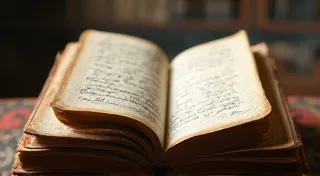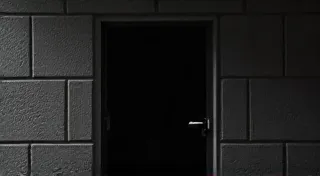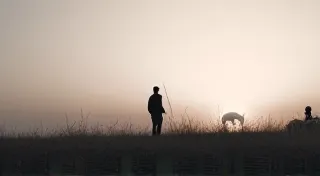Light Leaks & Literary Ghosts: Embracing the Unexpected in Storytelling
There's a peculiar kind of magic that clings to vintage viewfinders. Not just the mechanics, the brass and leather, the satisfying click of a decades-old lens adjusting, but something deeper. It’s a feeling of connection—to the photographer who held it, to the moment they captured, and to a time when the world felt a little more deliberate, a little more beautiful, even in its imperfections.
Restoring these viewfinders isn't merely about cleaning and repairing; it's about preserving a whisper of history. Many have known hands, witnessed unfolding scenes, and even endured periods of neglect. Each scratch on the focusing ring, each tiny speck of dust clinging to the optics, tells a silent story. And just like the light leaks that unexpectedly bloom across vintage photographs, these imperfections, once considered flaws, now feel essential to the overall aesthetic—a testament to time's relentless passage and the enduring spirit of creativity.

The Beauty of the Unforeseen
The concept extends far beyond the realm of antique cameras and photography. Just as a light leak transforms a clinical photograph into a dreamlike reverie, unexpected elements can enrich a story. Think of the best tales you know – aren't they often characterized by moments of spontaneity, by deviations from a rigidly planned trajectory? The planned narrative can be robust and well-structured, but it's the unpredictable “happy accidents” that truly elevate it, imbuing it with depth, authenticity, and an undeniable emotional resonance.
As writers, we often strive for control – crafting detailed outlines, meticulously planning character arcs, and obsessively worrying about plot twists. While preparation is valuable, it’s crucial to remain open to the unexpected. What if a character says something you didn’t anticipate? What if a subplot seems to organically develop, pulling you in a direction you hadn't considered? These moments aren't failures; they're opportunities—chances to breathe fresh life into your narrative.
I remember once working on a historical novel about a clockmaker in 18th-century Vienna. My initial outline was painstakingly detailed – every gear, every lever, every philosophical debate the clockmaker would have. Then, during a scene involving a chance encounter with a street performer, a line popped into my head that completely shattered my planned dialogue. It was quirky, a little whimsical, and utterly out of character for the clockmaker based on my previous conception. My first instinct was to delete it, to force it back into the confines of my rigid plan. But something held me back. I let it stand. And that single, unexpected line opened up a whole new layer of complexity to the character, revealing a hidden vulnerability that resonated deeply with the overarching themes of the novel.
Craftsmanship and the Echoes of the Past
The artistry involved in creating these vintage viewfinders is astonishing. Imagine the skill required to craft the intricate mechanisms, the precision needed to align the optics, the dedication to producing a product designed to last for generations. Many of these viewfinders were manufactured in an era before mass production, when craftsmanship was prized above all else. Each component, from the leatherette covering to the brass focusing ring, was meticulously crafted by hand, reflecting a level of care and attention to detail that’s rarely seen in today's disposable world.
Restoring them isn’s simply about applying a coat of polish. It’s about understanding the original intent, the techniques employed, and the materials used. It’s about researching the manufacturer, identifying the specific model, and appreciating the historical context in which it was created. Each repair, each replacement part, is a small act of reverence—a way of honoring the legacy of the original craftsman.
The same philosophy applies to storytelling. While it's important to master the fundamentals – plot, character development, pacing – it’s equally crucial to cultivate a sense of playfulness, a willingness to experiment, and a deep respect for the creative process. Don’t be afraid to deviate from the plan, to embrace the unexpected, and to allow your story to evolve organically.

The Ghosts of Moments Gone By
Holding a vintage viewfinder, you can almost feel the echoes of the past. Imagine the photographer, standing in a bustling city street, carefully framing a scene, capturing a fleeting moment in time. Perhaps they were documenting a momentous event, or simply preserving a memory for posterity. Perhaps they were a professional photographer, or an amateur hobbyist. Their story is lost to time, but their presence lingers in the viewfinder, a faint whisper of the past.
These “literary ghosts” can influence our own creative endeavors. They remind us that we are part of a larger conversation, that our stories are built upon the foundations laid by those who came before us. And they encourage us to embrace the unexpected, to allow our imaginations to roam free, and to create stories that resonate with the same enduring power and beauty.
My grandmother collected antique accordions – not for their monetary value, but for the stories they held. Each accordion was a portal to a different era, a different culture, a different set of human experiences. She would often say, “Listen closely, and you can hear the music of the past.” I’m convinced that the same principle applies to vintage viewfinders, and to the stories we create with them.

Embracing Imperfection
Ultimately, the magic of vintage viewfinders, and the power of truly compelling storytelling, lies in their imperfections. The light leaks, the scratches, the unexpected twists—these are the elements that make them unique, authentic, and enduringly beautiful. Don't strive for flawless perfection; embrace the unexpected, celebrate the imperfections, and allow your creativity to flow freely. For it is in these moments of spontaneity and surprise that the most profound and resonant stories are born.





